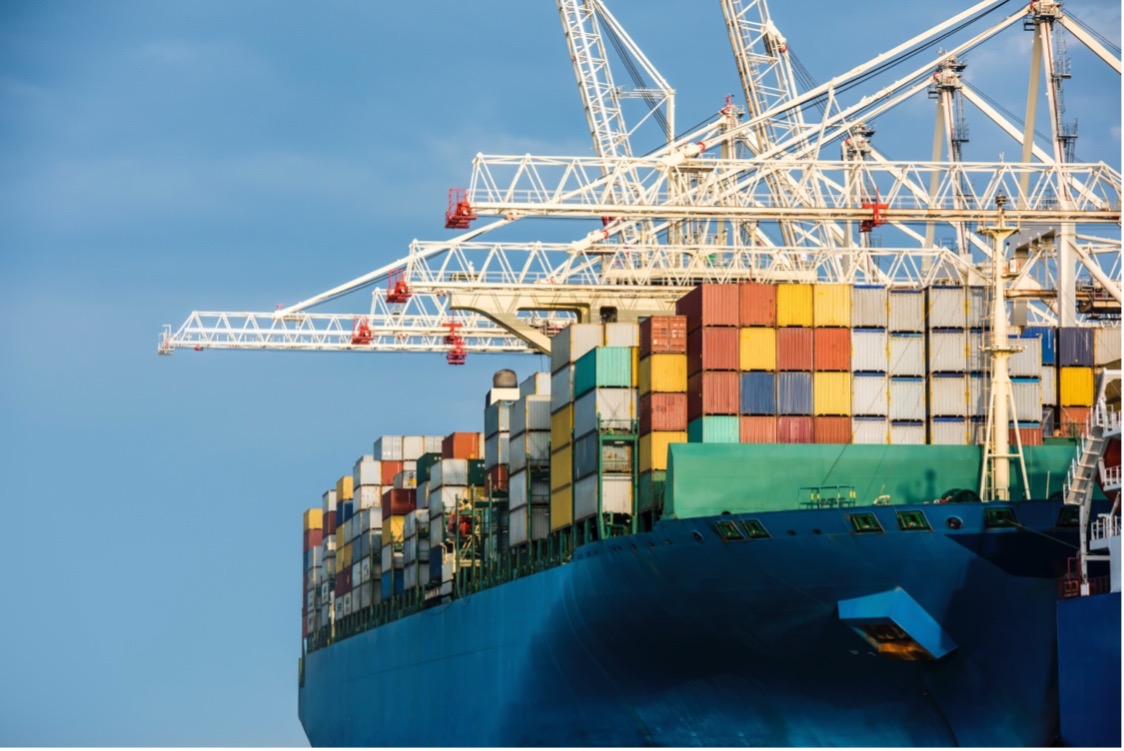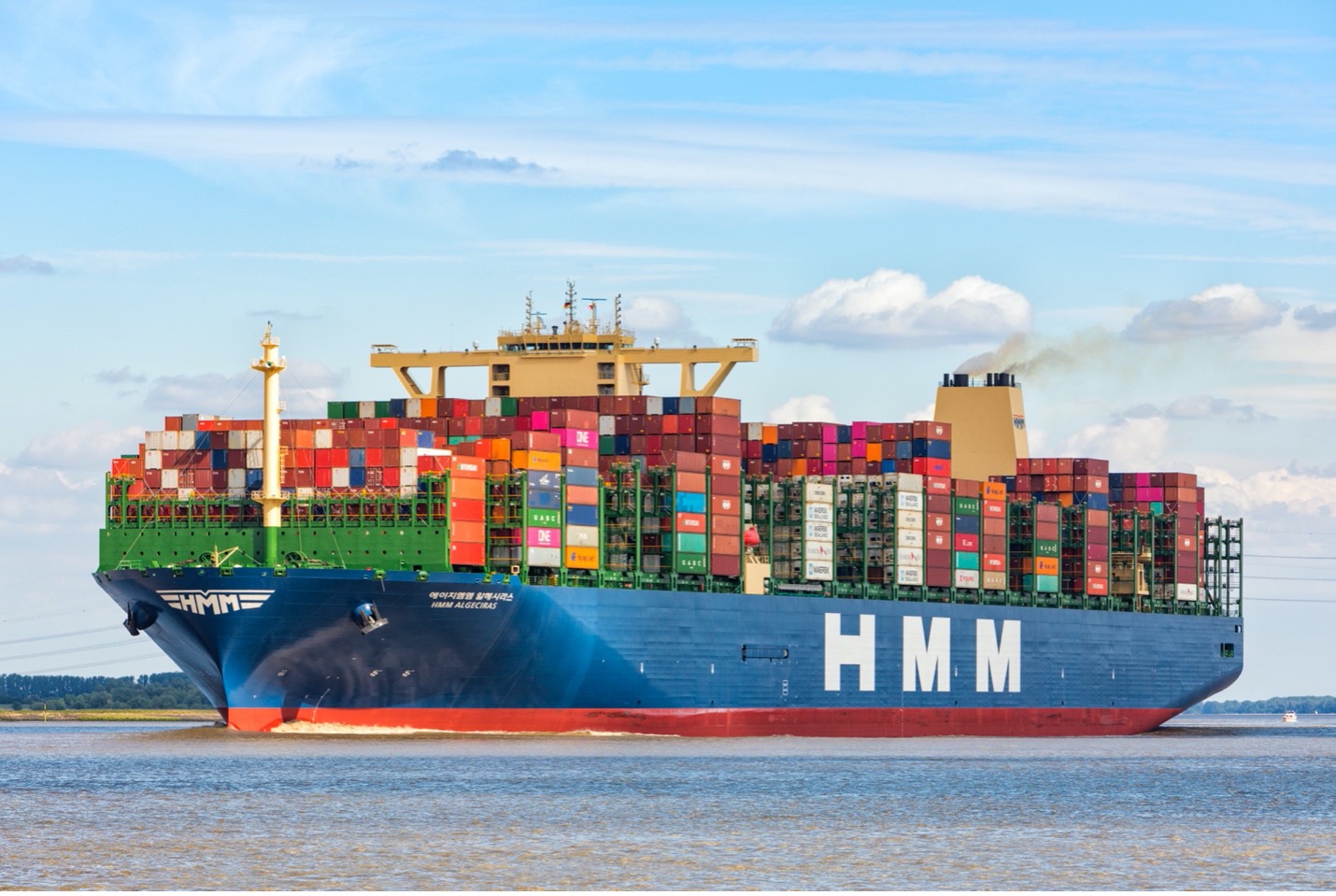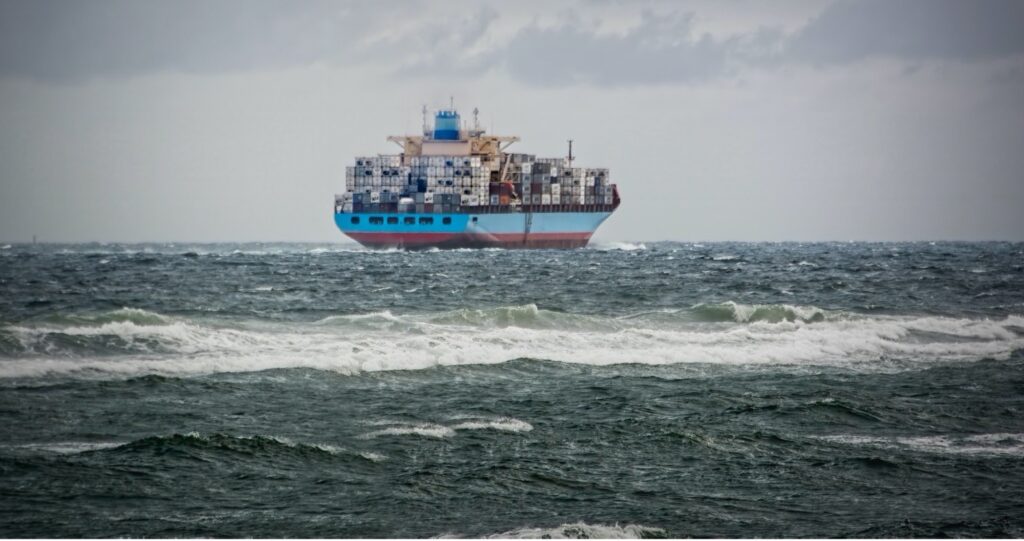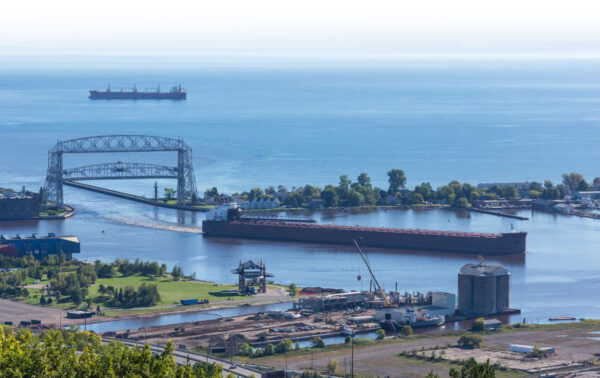Why are shipping containers lost at sea and where do they end up?
There was a brisk wind blowing off Canada’s Pacific coast as the small boat approached the beach on its perilous mission. Cold, salty sea-spray was blowing back, stinging the faces of the volunteers as they were trying to steady themselves along with their burlap bags and equipment, all while the boat was being tossed around in the choppy seas.
One misstep by either the skipper trying to steady the boat or the volunteers getting ready to jump into the water and clamber up the rocky beaches that dot the gnarly, rocky coastline could be catastrophic. The waters funnelled into narrow channels making it even more difficult to navigate and land, as each cycle of waves ebbed and flowed.
For Lilly Woodbury, the regional manager of the Surfrider Foundation, an organization dedicated to cleaning up the oceans, the scale of the destruction ashore was immediate. She was overwhelmed by the devastation and the sheer jumble of debris that was strewn in this once natural environment. “It was the ghastly yellow polyurethane foam and Styrofoam, which ended up washing and blowing up literally like polyurethane bombs,” she said. “It was very visible, very tangible.”
As she was picking up the waste her eyes caught a small creature wedged in between some foam – it was a tiny salamander and she realized just how distressing and upsetting the scene was. “It really broke my heart to see all this foam on the beach, blowing into the forest, and little creatures like salamanders sandwiched between this ghastly toxic waste,” she said.
The plastic breaks down and floats, creating the likelihood that marine animals and fish will eat it. Woodbury continued: “These little balls of yellow and white foam look like food, so it’s hard to track evidence of them eating it. On the shoreline, you do find plastic foam bitten into by wolves and bears and other animals. You see bitemarks, so you know they are trying to eat it.”
Woodbury and the other volunteers were now faced with a Herculean, almost impossible, task: to clean up the twisted metal and insulation from what was left of 35 empty shipping containers that had previously spilled from the Hanjin Seattle container ship and were relentlessly pounded by the unforgiving waves and tides of the Pacific Ocean.
Just a few months earlier Woodbury was at the other end of the Pacific when this barrage of wreckage fell into the ocean. It was Nov. 3, 2016. The container ship Hanjin Seattle was finishing a journey to drop off a number of full shipping containers – known as sea cans in maritime parlance – in Seattle, WA, and Vancouver, BC, and then home to South Korea. The company was in the midst of bankruptcy and financial resources were scarce.
It should have been a routine voyage, but the Pacific Ocean is well known by mariners for its strong winds, rough seas and powerful storms. Just west of the Strait of Juan de Fuca, the vessel hit heavy seas and, in a few short minutes, its empty containers were lost overboard. After reporting the incident, the ship continued its journey to Seattle to drop off some damaged containers and to have the remaining containers rearranged and secured for safe travel.
Upon hearing the news, the Canadian and US Coast Guard issued warnings to shipping that there were containers floating in the busy channel, some of which could have sunk, while others might still be floating just under the waterline.
Beyond those initial reports little was known about what happened to the containers and where their final resting place might be. That situation was soon to change. Reports started coming in that some of them were washing ashore intact while others were in fragments across 60 kilometres of the shores and archipelago that is Canada’s Pacific Rim National Park Reserve.
Why do containers fall off ships?
The World Shipping Council (WSC) reported that an average 1,382 containers were lost at sea between 2018 and 2019. In the summer of 2022, the WSC issued a report recognizing that while container loss at sea is extremely rare, it had increased by 18% since 2020-2021, mostly due to weather-related events. The worst year occurred in 2013, when the MOL Comfort sank in the Indian Ocean with a loss of 4,293 containers. Another spike happened between Nov. 2020 and April 2021, when it is estimated that nearly 3,000 containers were lost in the North Pacific in five separate incidents. That’s double the annual average in a matter of weeks. So, what’s going on?
There is a range of explanations of why containers fall off ships. Prior to the losses of 2020/21 the WSC issued a report that reviewed the scope of the problem. In the more recent losses, the WSC, International Chamber of Shipping and the Baltic and International Maritime Council told the International Maritime Organization’s (IMO) Maritime Safety Committee (MSC 103) that it believed no single factor caused the incidents but rather that there might have been several causes. This included stormy weather, ship design, propulsion issues and how containers are lashed together including varying regulations around the latter. The degradation of containers and resulting metal fatigue could also be considerations.
In some instances, containers may not be loaded correctly and inadequately secured for rough seas. Container ships are also getting larger and stacked to the equivalent height of a medium-sized building. There are also more of these ships at sea as global trade expands. Climate change induced storms, especially in the North Pacific could be another culprit.
In an article in Insurance Journal, Allianz Global Corporate & Specialty notes that most of the recent incidents involving containers have occurred in the Pacific Ocean, a region with the busiest marine traffic and some of the heaviest weather in the world. According to their analysis, there are a number of reasons for the losses, but climate change plays a role: “The journey has always been rough, but it’s become more perilous due to changing weather patterns. The rise in traffic from China to the U.S. this past winter coincided with the strongest winds over the Northern Pacific since 1948, increasing the likelihood of rougher seas and bigger waves, said Todd Crawford, chief meteorologist at The Weather Company.1”
But as these ships and their loads become larger and higher, their very stability is at risk. A phenomenon called parametric rolling can happen when waves hit the front of the ship at an angle, rather than head-on. As a result, the ship could go into a rolling motion synchronized with the waves which, combined with the ship’s normal pitching as it moves forward, can cause containers to break free from their lashings and tossed overboard. Maritime officials say ship operators are looking at installing sensors that could issue warnings on sea conditions to avoid it.

“The higher you stack the boxes on deck, the larger the forces they are subjected to when the vessel moves in waves, and this could be a contributing factor, especially as the recent demand boom has meant filling all ships to the brim,” Lars Jensen, chief executive of Denmark-based Sea Intelligence Consulting, explained to the Wall Street Journal.
Anna Larsson, Communications Director for the World Shipping Council, says that every container overboard incident is thoroughly investigated to find and learn from the causes behind it. The final reports of the incidents at the end of 2020/21 are still pending, but it is clear that extreme weather and winds are a common denominator in these incidents.
Pinning this series of incidents on a specific cause is difficult, Larsson says: “The International Panel on Climate Change now make a clear connection between climate change and recent extreme weather events. However, which factor to attribute to climate change when it comes to these specific events, we do not know.”
Opinions on the severity of the problem vary. In the view of Lars Jensen, he does not believe that there is a major increase in container losses at sea. The World Shipping Council found a tiny fraction, about .0006%, of the total containers shipped on the world’s oceans each year were lost. “However, the number of containers lost increased sharply in 2020/21 driven by a couple of major events. But, statistically speaking, I find it hard to see that as a pattern, it could equally well be a fluke,” Jensen said in an emailed response to a question from Clear Seas.

With that jump in losses in 2020/21, the Baltic and International Maritime Council and World Shipping Council are working in conjunction with the IMO and taking a number of actions such as mandatory container inspections and a code of practice for loss reduction. In May 2021, the IMO’s Marine Safety Committee agreed to establish a compulsory system to declare the loss of containers and set up means to easily identify the exact number of losses which will help in tracking and recovery.
Still, this will not come into effect for at least 2023. In Canada, there are no specific programs to fund container wreckage removal under the Oceans Protections Plan or provincial programs. And as the case of the Hanjin Seattle illustrated, the chain of command for recovery and who would pay is not clear.
Zim Kingston incident: Containers topple off ship during stormy weather
Attention was again focused on container shipping safety on Canada’s West Coast when more than a hundred containers fell overboard from the M/V Zim Kingston during rough seas in October 2021 at the entrance of the Strait of Juan de Fuca.
Some of the shipping containers were carrying hazardous materials and ignited, causing a ship-board fire that lasted for several days. Many of the containers sank; most remain unaccounted for. Four containers were known to wash ashore along the coast of northern Vancouver Island. Debris included Styrofoam, refrigerators, consumer products and packaging materials. Clean-up crews were contracted and dispatched by the company that manages the ship. The Canadian Coast Guard actively monitored the situation and provided regular updates on the status of the ship and the lost containers.
One of the containers that fell off the Zim Kingston washed ashore on the northern coast of Vancouver Island (Source: Canadian Coast Guard).
#CCGLive: The owner of the #ZimKingston has hired a contractor to remove debris from the beach as well as recover the containers. As of this update, no other containers have been found on shore. pic.twitter.com/BaSO6fQsr6
— Canadian Coast Guard (@CoastGuardCAN) October 29, 2021
Who’s responsible for retrieving containers?
Despite the recent incident involving the Zim Kingston, container loss isn’t a common occurrence in Canada. But, when it does happen, it is the shipping company’s responsibility and not the Canadian Coast Guard’s to recover lost containers. In the case of the Hanjin Seattle, the federal government could have forced Hanjin to remove the debris right away, but didn’t because it was not believed that by that time pieces of the containers posed any immediate environmental or navigational hazards.2
Still, there are no international conventions specifically covering the loss of shipping containers. If contents contain dangerous materials their loss must be reported. But if there is nothing harmful in the container, there is no obligation to report its loss. In a recent interview with Ship Technology, Antidia Citores, international spokesperson for Surfrider Foundation, a Non-Governmental Organization dedicated to ocean and coastal protection, which has studied the issue, noted that: “We’ve found that on some occasions, the team on the boat said they only realized containers had been lost at sea once they had reached the port and had to make the inventory.”
There are international treaties and regulations which, in the words of the IMO “may be relevant in the cases of claims related to containers.” The Nairobi International Convention of the Removal of Wrecks has provisions that cover “hazards created by any object lost at sea from a ship,” which makes shipowners liable for damages and provides for direct action and claims against insurers. But until clearer policies and regulations are in place, as the Hanjin Seattle incident illustrates, it often becomes the responsibility of volunteers and non-governmental organizations in coastal and First Nations communities to do the heavy lifting of cleaning up the mess.
Recovering lost containers: Anatomy of a clean-up
Back on Canada’s West Coast, although the Hanjin Seattle’s empty containers were largely forgotten and written off as losses by the end of 2016, for the residents of western Vancouver Island they were becoming a very real, and a much bigger problem.
Cleaning up this wreckage was now of paramount concern and the responsibility of hundreds of volunteers, led by Surfrider, as well as members of the Ahousaht First Nation, and Parks Canada staff, in whose jurisdiction most of the broken pieces were resting. Many other locals acted independently collecting waste as they found it.
By April 2017, the clean-up crews started working in full force at 17 different sites around the Park Reserve, which had been heavily hit by these containers. “So, we made a remote shoreline clean-up plan where they would go in doing the heavy duty work of cutting up the containers, doing the helicopter work, doing that really industrialized expertise work with contractors,” Woodbury explains.
“We got to the most seriously hit sites but foam is so insidious. It breaks down into these tiny one millimetre balls and there’s millions of pieces. You can’t pick it up, it’s too hard. The sheer volume that’s mixed in the soil and the sand is way too much. You do your best to pick up the big pieces before it breaks down,” says Woodbury. “It almost becomes a lost cause requiring some heavy industrial systems to take out the sand and filter it to get out. We collected large pieces but there are still remnants out there.”
As time ticked by later, the problem got worse. “The containers were further encased in the sand and rock along the beaches. The foam had already broken up into smaller pieces. It’s very distinct foam. We’re still finding foam along the coast; we still find it in 2021.”
In addition to removing Hanjin Seattle’s container wreckage, it was an opportunity to clean up tons of other marine debris. “It really exposed the scale of how much other plastic pollution there was. We were collecting from the Hanjin Seattle but also collecting tons of consumer plastic and fishing and aquaculture debris. So, we were getting data not just on the container ship, but also the composition of consumer and industrial plastic which elucidate the policies need to address the real issue.”
As time went by, the volume of wreckage and plastic continued to climb. They filled one ton super sacks which measure five foot by 35 inches by 50 inches. “They are the size of a person and we filled up hundreds of them,” she said. That was over and above the containers themselves that needed to be cut up by professional salvage crews and hauled out by helicopter. Woodbury and her volunteers collected between 20 to 30 tons in total. “And keeping in mind most of that was foam and plastic which on its own doesn’t weigh a lot.”
Working with First Nations for clean-up
The clean-up crews worked closely with First Nations as the wreckage and pollution was largely on Indigenous lands and waters. “All of our clean-ups are in partnership with First Nations. Before we start, the very first thing we do is work with the Nation, get approvals, and see how we can work together. We contract with people from the Nation, so it provides employment and respects their laws in their territories. Their Elders and Chiefs come and do openings and blessings. We collaborate as much as possible.”
Woodbury says that she feels that the shipping industry is disconnected from the repercussions of lost containers and doesn’t see the end result. “If they’d been here on the ground they would have seen how disastrous it was for the coastline and how much that hurt the people who live here. Honestly, it’s a form of ‘waste’ colonialism for the Indigenous People, the First Nation. Were they compensated for the disaster that happened on their land? No. But that waste material was just shipped off on to their territory without a thought.”
What the future holds?
The loss of shipping containers at sea is a concern for the marine shipping industry. While the numbers that fall into the ocean and wash ashore are still relatively small, it is clear that in the case of Canada’s West Coast the impact of lost shipping containers – even empty ones – can be devastating to local coastal communities as well as marine and land animals. Although the Hanjin Seattle lost empty containers, the MSC Zoe, which lost 342 containers full of household products on New Year’s Day 2019 off the coast of the Netherlands illustrates the environmental issues associated with the waste from full containers. Another serious incident occurred when 54 tons of nurdles, the pre-production elements of plastic, were lost off the coast of South Africa in 2017.
New regulations, stronger enforcement and improved safety should prevent many of these incidents from happening. But even then, the legacy of a few broken shipping containers can be destructive and costly, and the salvage bogged down by confusion within different jurisdictions as to who’s actually responsible for cleaning it up.
Containers 101: A short history of the sea can
There are roughly 226 million container boxes shipped annually with some 6,000 container ships at sea at any point in time as part of the global supply chain. They ship approximately US$4 trillion of commercial goods annually and have completely revolutionized global trade. The concept of the container was conceived of by Malcom McLean, a former North Carolina truck driver in 1937 while he waited most of the day to deliver cotton bales on his truck to a pier in New Jersey. “Suddenly it occurred to me: Would it not be great if my trailer could simply be lifted up and placed on the ship without its contents being touched?”
He put his idea into action as he converted the World War II tanker Potrero Hills to a ship capable of carrying containers and rechristened her the Ideal X. She made her maiden journey on April 26, 1956, sailing from Newark, NJ, to Houston, TX, carrying 58 metal containers and 15,000 tons of petroleum. McLean moved into ship owning with his company Sea-Land. Initially the containers were loaded on their chassis, but later the chassis was left behind, enabling containers to be stacked. The first vessel to carry containers only was Sea-Land’s Gateway City which made her maiden voyage on Oct. 4, 1957.
Shipping containers are mostly made from steel and come in two principal sizes (20 or 40 foot lengths conforming to twenty foot equivalent units or TEUs) for ease of fitting on ships, trains and trucks for intermodal transportation. There are 11 types of containers and dimensions can vary slightly. While some are a basic box, others called reefers can be insulated and contain refrigeration units for the shipment of frozen foods, vegetables, pharmaceutical and medical products, and other perishable items. Others can be adapted to fit tanks for the shipment of liquids. Sea cans carry building supplies, fertilizers, smart phones, furniture, appliances, pots and pans, just about anything you use in your daily life. They can also contain hazardous materials, chemicals, and a range of what could be toxic products if spilled or leaked into the ocean. Containers aren’t necessarily watertight, but may float in the event they go overboard. Few are recovered: most sink or wash ashore.
Nearly seven decades later, the reality is that container ships have become a vital link in global trade and are being built to carry more containers than ever. The Ever Ace, which is the world’s largest container ship, has a 23,992 TEU capacity, and is one of the most technologically advanced ships in the world. And it’s that increase in size that could be leading to more mishaps.

References
1 Insurance Journal. (2021). Shipping Containers Plunge Overboard as Supply Race Raises Risks.
2 The Globe and Mail. (2017). How a bankrupt shipper’s blunder turned into a bureaucratic nightmare for Ottawa.



